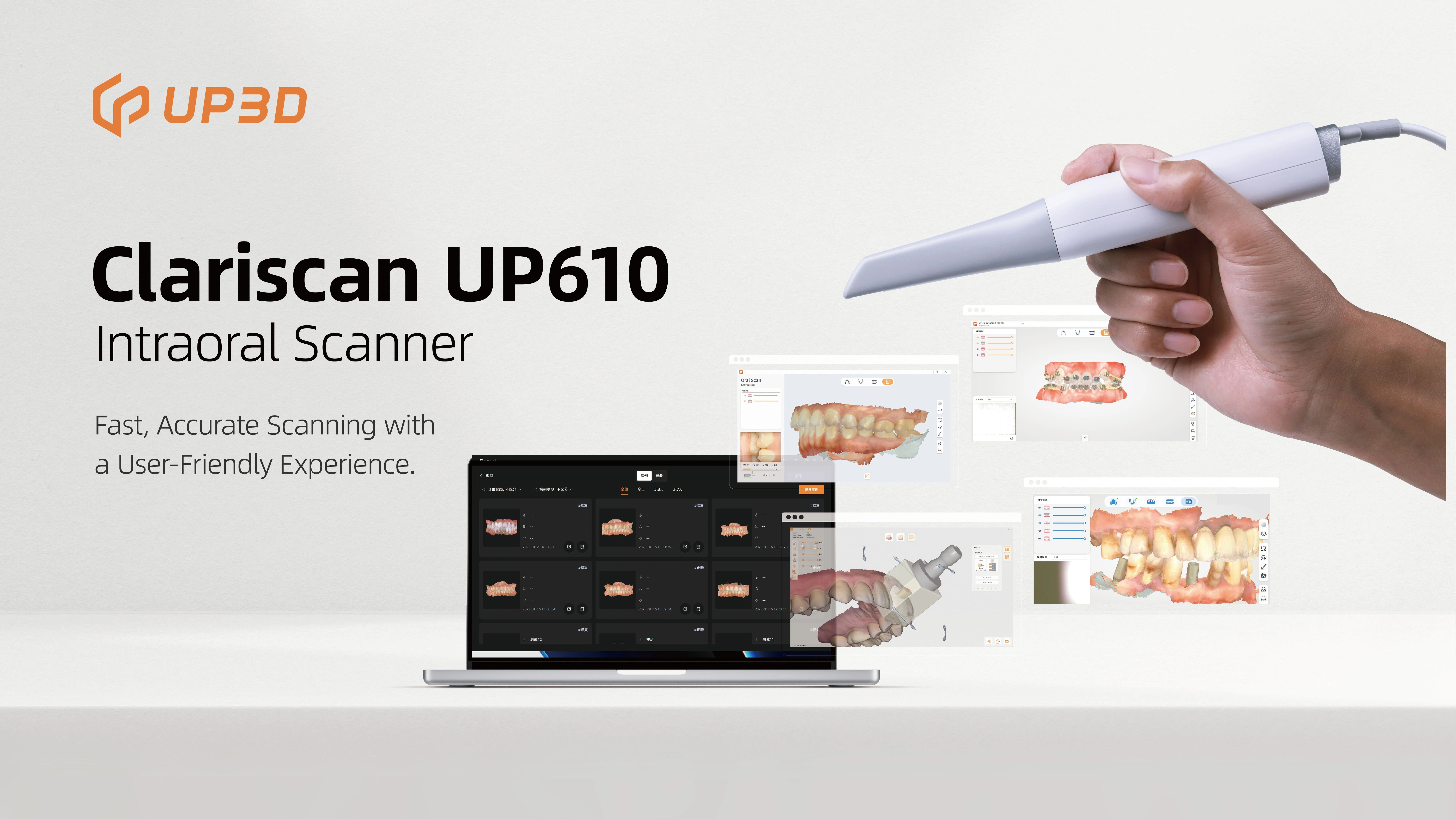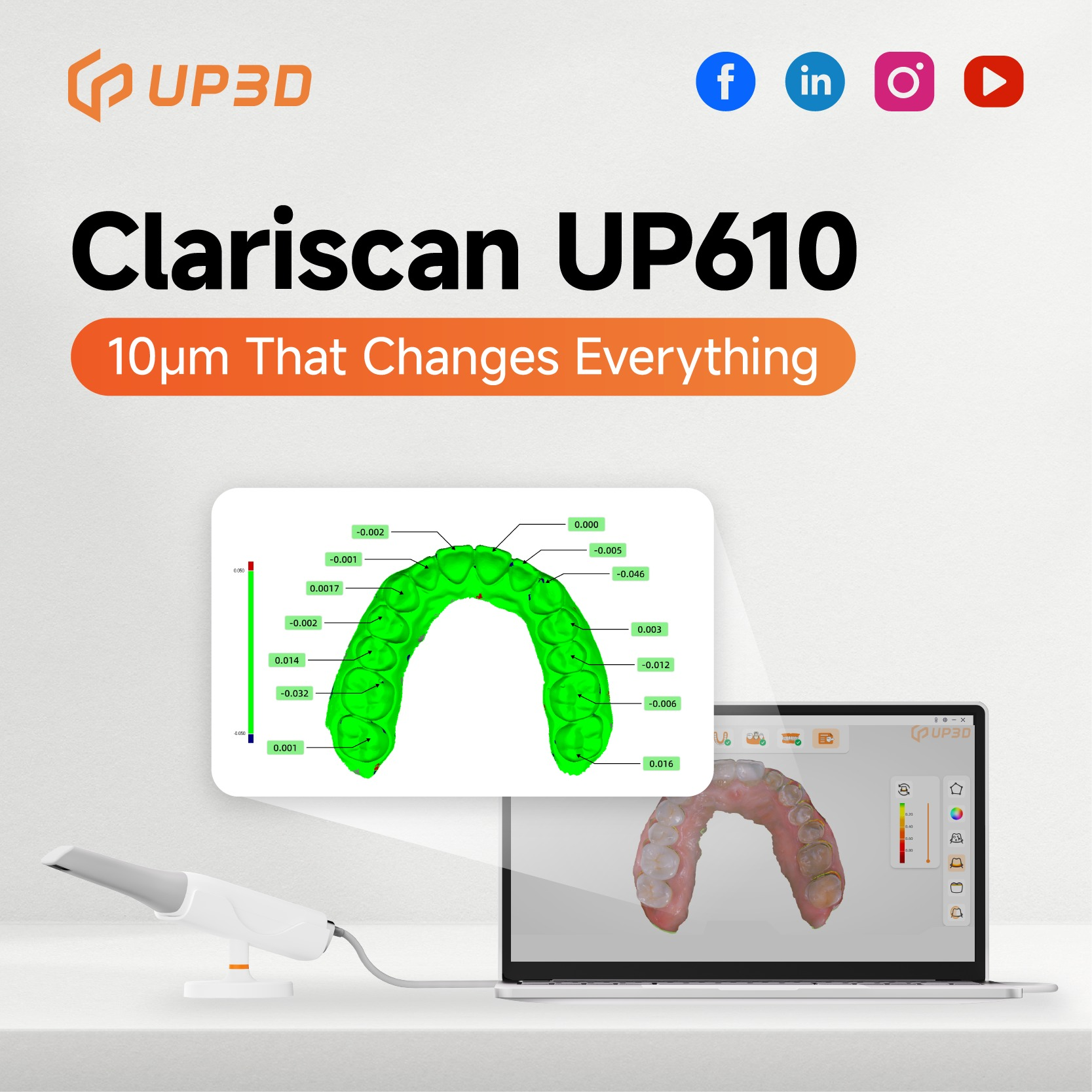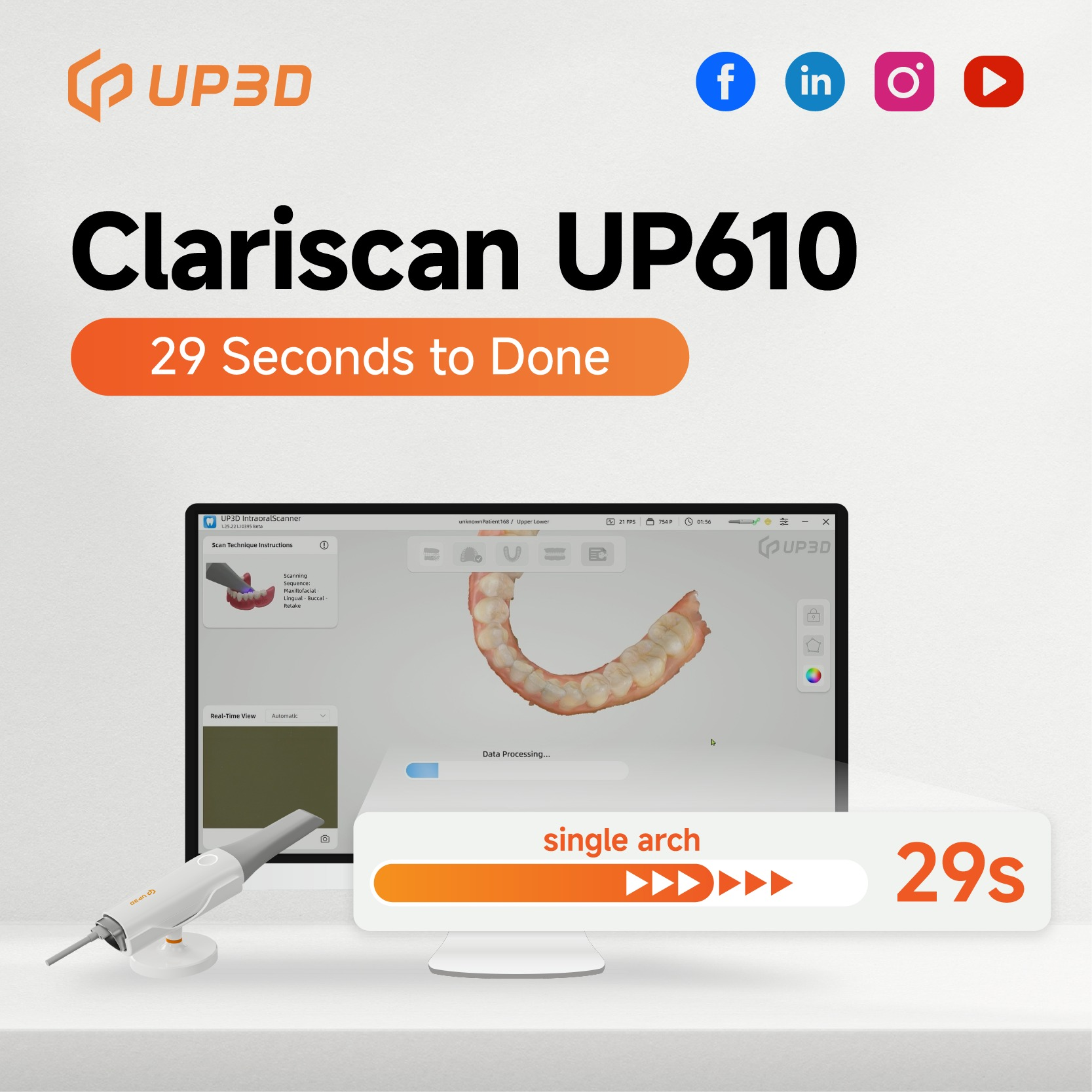Every clinic has different needs. Some focus on high-precision implant cases. Others handle dozens of orthodontic scans a day. Many are looking to upgrade their restorative workflow or begin offering same-day chairside restorations.
With so many priorities, no single scanner is perfect for everyone. The real question is: what matters most in your daily clinical reality?
In this article, we’ll walk through five common use cases — and help you decide whether the UP610 or the UP600 intraoral scanner is the better fit for your practice.

Implant Cases: When Precision Is Non-Negotiable
Implant workflows demand precision — especially in full-arch or multi-unit restorations. A small error in scan accuracy can lead to serious misfit problems down the line.
For these cases, the UP610 offers clear advantages. It provides up to 10μm full-arch accuracy and a scan depth of 27mm, ideal for reliably capturing scanbody geometry, even in challenging posterior regions. The scanner’s stable tracking and high detail level reduce the need for rescanning, making it especially effective for implant-supported bridges and immediate loading workflows.

UP600 is capable of handling single-unit implants, but for clinics that prioritize complex surgical-prosthetic workflows, UP610 offers the confidence and consistency that these treatments require.
Orthodontics: Speed, Ergonomics, and Repeatability
Orthodontic practices need speed and comfort — for both clinician and patient. A full arch often needs to be scanned in seconds, sometimes multiple times across a treatment plan.
The UP610 delivers that efficiency. Its lightweight design (only 190g) reduces hand fatigue during long scanning sessions, and its single-arch scan time of just 29 seconds helps keep patient chair time low. The scanner also handles bite registration and occlusal contact with clarity, improving appliance planning accuracy.

While UP600 also performs well in ortho settings, the UP610’s speed and ergonomic upgrades make it especially attractive for high-throughput practices.
Restorative Dentistry: Daily Cases Done Right
For clinics focused on crowns, bridges, and inlay/onlay restorations, the priority is balance: you need good margin line clarity, accurate occlusion, and a smooth handoff to the lab or chairside mill.
This is where the UP600 shines. It provides dependable performance for everyday restorative cases, with clean surface detail and strong compatibility across CAD platforms. For clinics that process mostly posterior restorations or single-unit crowns, it offers excellent value.
That said, if you also handle anterior veneers or high-aesthetic cases where subgingival detail is essential, the enhanced scan depth and finer margin recognition of the UP610 may justify the upgrade.
Chairside Restorations: When Time Is Everything
For chairside workflows — where scan, design, mill, and delivery all happen in a single appointment — speed and precision are critical.
The UP610 is built for this. It allows quick scan capture, reliable margin recognition, and seamless export into design software and UP3D’s P42 Plus or P55D milling systems. Whether you’re restoring a molar crown or designing dual veneers, the UP610 helps ensure the fit is right the first time, with no delays or repeat scans.
UP600 can also be used chairside, especially in clinics just starting with digital. But for high-efficiency practices focused on same-day results, the extra capability of UP610 will pay off quickly.
Full-Arch Scanning: No Room for Error
Capturing a full arch — whether for complete dentures, edentulous impressions, or diagnostics — pushes scanner performance to its limits. You need depth, clarity, and stitching stability.
The UP610 was designed with this challenge in mind. Its extended scan depth helps capture palatal vaults and deep anatomical contours without losing data. Its AI-assisted tracking also improves consistency across long-span scans, helping reduce scan breaks and rescans — a big time saver when working with complex oral anatomy.
For general-purpose scanning, the UP600 performs reliably. But for clinics and labs that regularly handle full-arch work, UP610 offers superior control.
One Workflow, Two Smart Options
If your focus is restorative dentistry, and you want a cost-effective, dependable digital scanner for crowns, bridges, and lab workflows, the UP600 will serve you well.
If you want to push into high-volume orthodontics, complex implant cases, or same-day chairside milling with greater speed and deeper scanning range, the UP610 offers the performance advantage.
Both models use open file formats, integrate smoothly with UP3D’s milling systems, and deliver a fast learning curve — so whichever path you choose, your clinic is ready to go digital without complexity.
Still not sure which scanner fits your practice? Contact UP3D and speak with our clinical advisors. We’ll help match your workflow with the right device — and make sure your digital upgrade is a success.

